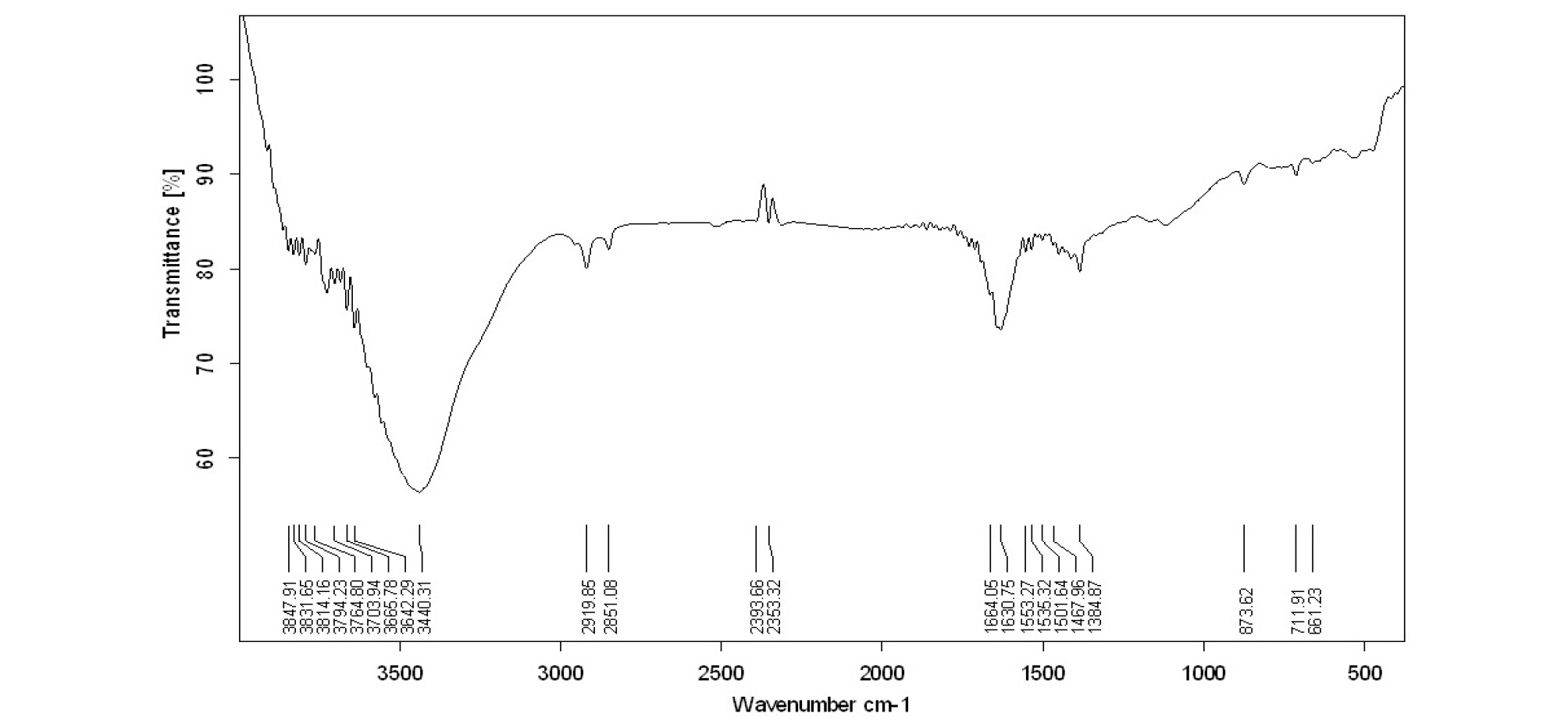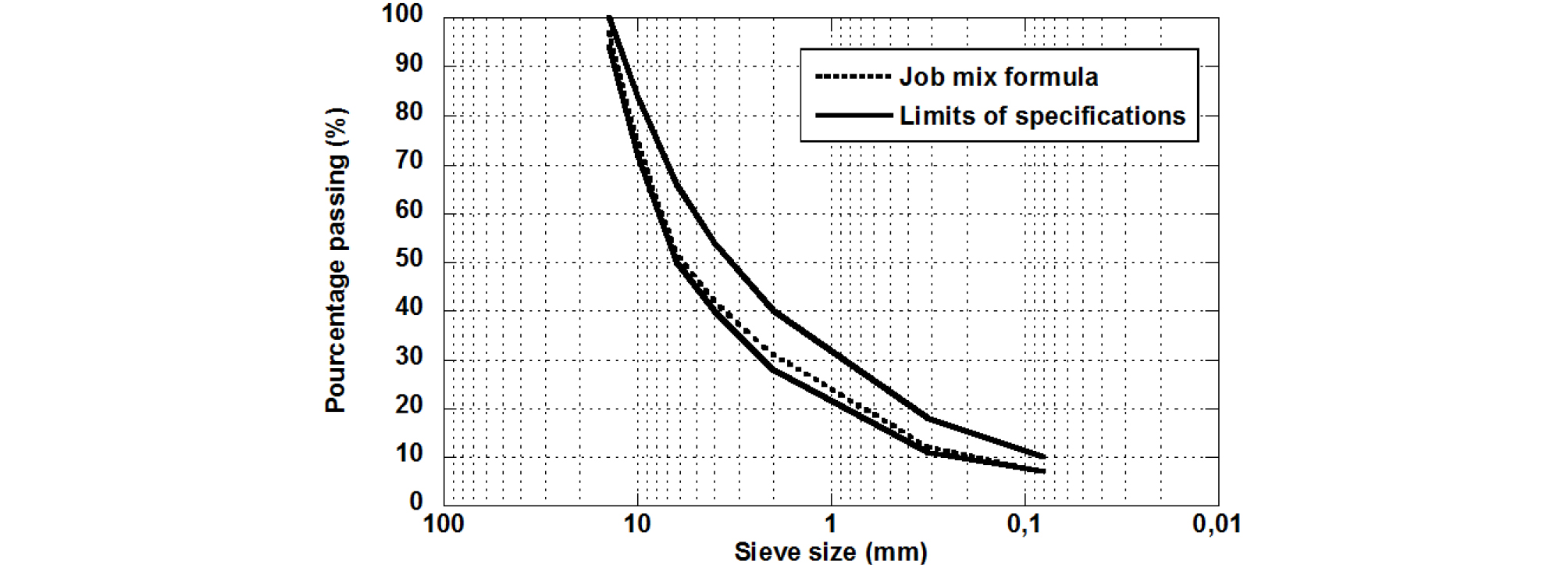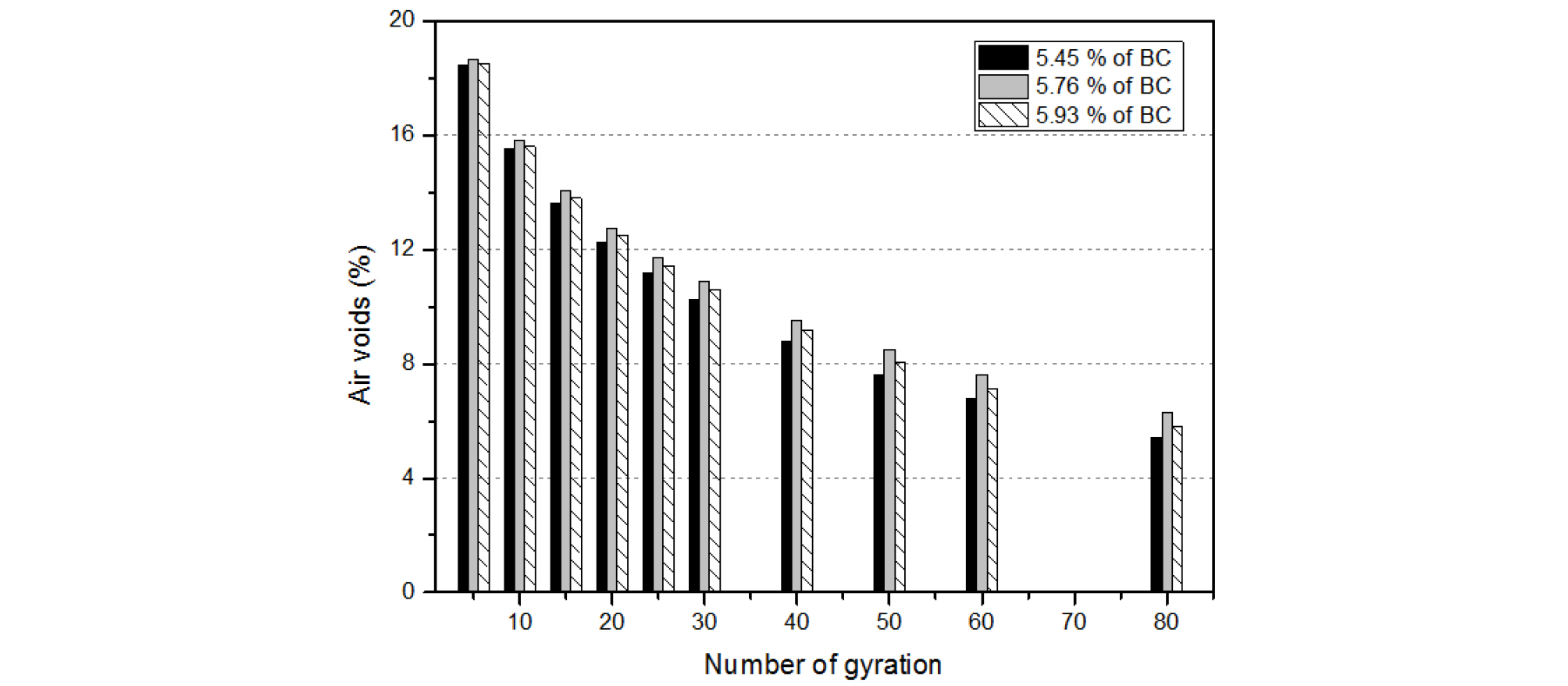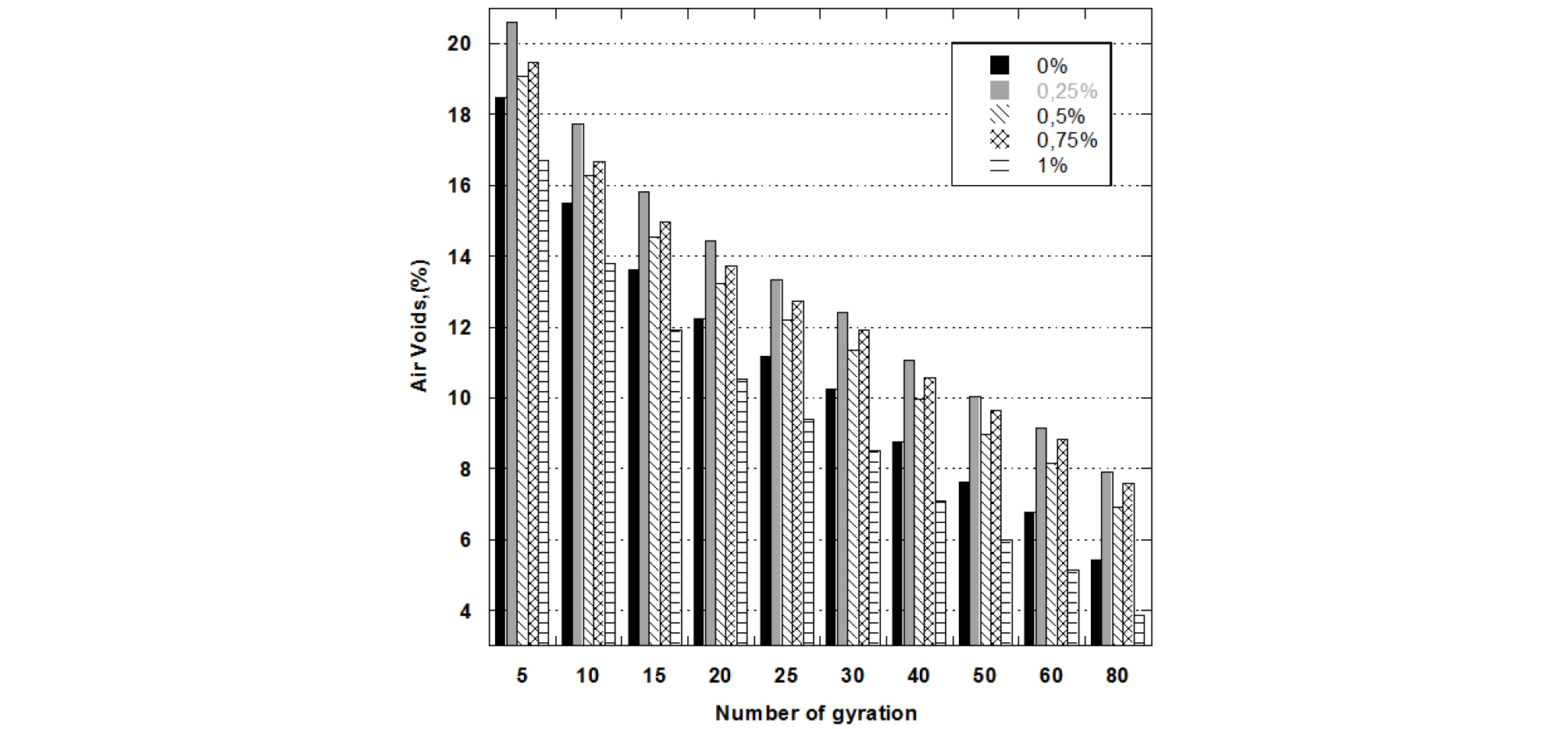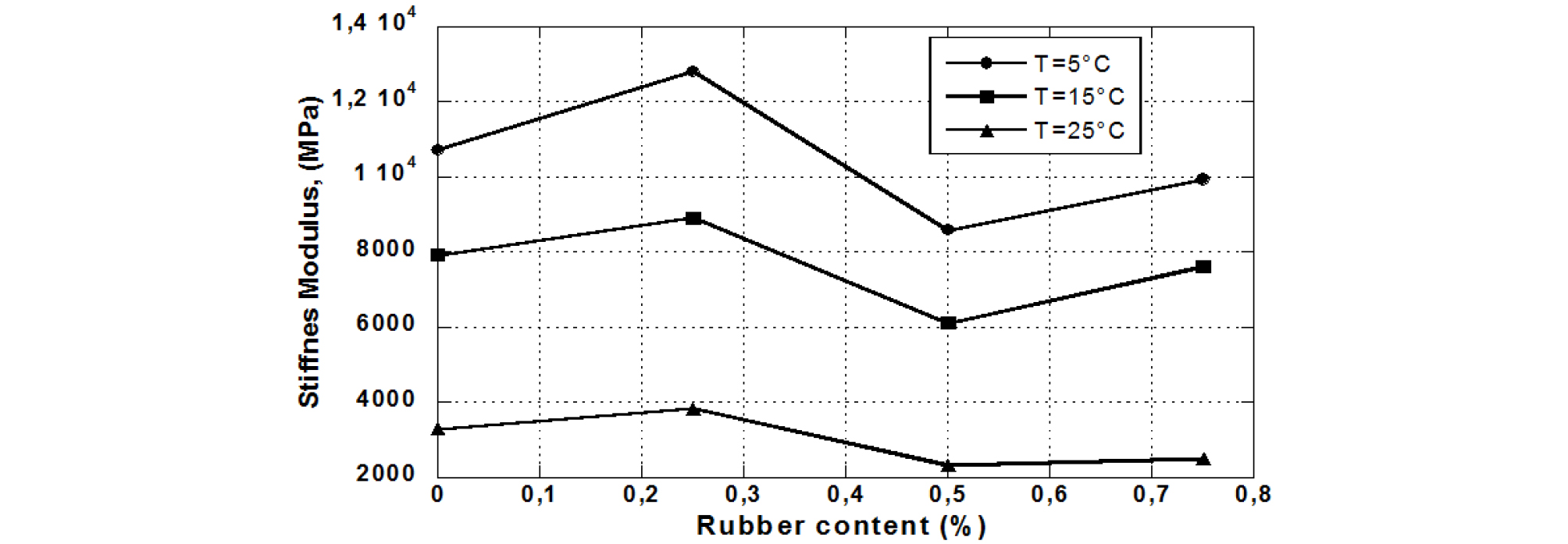Introduction
Materials
Bitumen and Aggregates
Crumb Rubber
Characterization of the rubber
Experimental design and procedure
Preparation of control and modified mixture
Gyratory compactor method
Marshall Design method
Indirect tensile stiffness modulus (ITSM) test
Discussion of results
Optimum bitumen content
Results of modified concrete bituminous
Workability
Marshall Parameters
Indirect Tensile Stiffness Modulus (ITSM)
Conclusion
Introduction
The road is the main vector of communication and exchange between populations and even nations. It is also an essential element to ensure the movement of goods and people. Given the aggressive nature of road traffic which continues to grow, there is a need to invest more and more in the development and improvement of roads.
Researches on road geotechnics and road materials, in particular, bitumen and bituminous mixes should be further developed. A major effort has been concentrated on the understanding of the performance of bituminous mixture in pavements, both in the laboratory and on the road. For several years, there has been a particular interest in modified bituminous concrete mixes.
Bituminous concrete has been improved by the incorporation of various additives directly in bitumen by wet process [1], [2], [3], [4], [5], [6], [7], [8] in order to use it under more severe conditions. This also allows satisfying the requirement of the pure binder. Its thermoplastic nature has many disadvantages especially at very low temperatures (it tends to become hard and brittle) and at very high temperatures (it tends to become viscous). In practice, this technique is difficult to exploit because of feasibility on an industrial scale (manufacturing, storage, and transport) [9].Also, using the dry process by the incorporation of additives in the mixture using various percentages of total weight mix improves the performance of bituminous concrete [10], [11], [12], [13], [14], [15], [16], [17].
Several studies on modified bituminous concrete have shown that the incorporation of different additives has improved performances of Asphalt. Four Polymeric waste: polyethylene (PE), polypropylene (PP), polystyrene (PS) and rubber from end-of-life tires (ELT) increased the stiffness of the reference mixture [16]. Marshall Quotient, indirect tensile strength and rutting resistance were improved by styrene-butadiene-styrene (SBS) modification [18]. Replacement of the mineral filler with lime improves slightly the stability and the flow of the mixtures [19]. 0.75% of plastic waste improved the Marshall parameters (bulk density, air voids, Marshall stability, Marshall flow, Marshall Quotient) [20]. In [21], the incorporation of waste polymer in bituminous concrete showed that the mix containing 8% WPM has shown considerable improvement in various mechanical properties of the mix compared to the conventional bituminous concrete mix. In [22] ARC obtained using the dry process showed better resistance to fatigue (at least 10 times more) and rutting (at least 2.5 times more) and it’s a good and sustainable option for pavement over layers in road pavement rehabilitation. Percentages of1.5% and 2% of CR [0-2.36 mm] improve the Marshall stability and rutting resistance of asphalt concrete [23].Crumb rubber percentage of less than 1% of the total weight of the mix and a digestion time of 90 min produced the best results [13]. In [14] results showed that in reference to moisture sensitivity and plastic deformations, the best performances were achieved with a digestion time of 45 min and a crumb rubber percentage of 0.5% and 1.0% of the total weight of the mix. Based on results of rutting tests, indirect tensile tests and various analysis, the addition of different content of tire rubber (1%, 2% and 3%) using dry process could improve engineering properties of asphalt mixture [10].
If we refer to the literature work, various studies have interested in adding the rubber to the mixtures using dry process with different percentages level without justifying this choice.
In this study, the dry process has been used to modify the bituminous concrete by crumb rubber which comes from the recovery of crushed rubber waste (soles of shoes and carpet of vehicles) from the elastomeric application company (SAEL Oued Smar Algeria). Our study is based on the direct introduction of rubber waste with different percentages by weight of the mixture into the granular skeleton of crushed aggregates. The choice of these percentages was fixed based on the workability of the mixture by the gyratory compactor test.
Tests to evaluate the mechanical performances of the conventional and modified mixes will be carried out on the determination of workability, Marshall Parameters and stiffness modulus. This allows to knowing the evolution of these performances and to determining the optimum content of rubber that could guarantee an improvement of the stability and rigidity of bituminous concrete.
Materials
Bitumen and Aggregates
In the present study, a conventional bitumen 40/50 penetration grade which is commonly used in Algeria has been adopted. This bitumen is provided by the Algerian oil refining company (NAFTAL).Its physical properties are shown in Table 1. Three granular fractions (0/3, 3/8, 8/15) were also used. The aggregates were collected from AZROU quarry in Boumerdes city, Algeria. Their physical and chemical properties are given in Table 2 and Table 3.
Table 1. Properties of bitumen
Table 2. Properties of mineral aggregate
Table 3. Chemical analysis aggregate
| Components | Value |
| Insoluble (SiO2+silicates) | 4.48% |
| CaCO3 | 94.83% |
| Fe2O3+Al2O3 | 1.98% |
| CaSO4, 2H2O | Traces |
| CO2 | 41.7% |
| NaCl | 0.18% |
| Boiler feed water | 0.28% |
The results of Table 3 show that the aggregates have high carbonates content (CaCO3). This means that the aggregates are of a calcareous nature.
Crumb Rubber
The polymer used as modifier is crumb rubber which comes from the recovery of crushed rubber waste of soles of shoes and carpet of vehicles. This has been supplied by the Algerian company SAEL “Company of Elastomers Application”. The particle size of the crumb rubber is (0.1 to 2 mm).
Characterization of the rubber
The following equipments were used for characterization:
• FTIR spectrophotometer using Perkin-Elmer Spectrum One, 4000-400 cm-1, resolution 2 cm-1, 32 scanning.
• Scanning electron microscope for characterization of the microstructure using JEOL JSM -6360 LV.
• Scanning electron microscope (EDS) using JEOL JSM-6360.
The FT-IR spectrum of the normal untreated sample containing rubber (Figure 1) shows typical absorption bands from poly-butadiene (C-H stretching at 2919 and 2852 cm-1, -CH2 twisting at 1384 cm-1 and out of plane deformation of C-H at 867 cm-1) and from polystyrene (aromatic C-H stretching at 3014 cm-1, aromatic C=C stretching at 1631 cm-1) units. There is also C-O-C bending absorption at 1122 cm-1. Finally, band detected at 539 cm-1 corresponds to the stretching mode of Zn-O single bond. These results confirm that the sample analyzed by FTIR is probably constituted by styrene-butadiene-styrene rubber compacted with zinc oxide.
In order to identify the chemical composition of the waste, a microanalysis was carried out. Indeed the punctual analysis by EDS measures the relative composition of organic matter and minerals. The microstructure of the waste was observed using a Jeol-type scanning electron microscope (SEM), JSM-6360 LV. The results are shown in Figure 2.
The morphology of the rubber (Figure 2(b): view of the surface) shows that this material exhibits heterogeneous dense structure, the distribution of the different components is not uniform. We note also that a grey color is recognized to the rubber polymeric chains and the white color is attributed to zinc grains.
Experimental design and procedure
Preparation of control and modified mixture
Firstly, the aggregate mixture was designed according to the standard limits of surface as shown in Figure 3. The job mix was formulated using coarse aggregates (8/15), fine aggregates (3/8) and sand (0/3) as 40, 20 and 40%, respectively. Three contents of bitumen (5.45, 5.76 and 5.93%) were added to the mixture of aggregates to determine the optimal content bitumen for control mix [24].
For the preparation of control mixture the aggregates were heated to 160°C then placed in a pan and mixed thoroughly. The 40/50 penetration grade bitumen heated to 160°C was added to the mixed aggregates. The bitumen and aggregates were mixed thoroughly until all aggregates were covered. For the preparation of modified mixtures, the rubber was added and mixed with aggregates and bitumen heated to 160°C. The specimens were prepared using the following percentages of crumb rubber (by weight of total mix) 0.25%, 0.5%, 0.75% and 1%. Mixture remained in the oven at 160°C for 120 minutes and then they were compacted. This 120 min period was verified as the time necessary to allow a complete connection between the crumb and the bitumen [22], [25].
Gyratory compactor method
For samples prepared using gyratory compactor according to EN 12697-31, 4.5 to 4.7 Kg of mixture was heated at160°C in to the gyratory mold of 100 mm diameter in one lift. The mixture is compacted at 30 gyrations per minute with an angle of gyration of 0.82°C, and a confining pressure of 600 kPa. The software supplied with the compactor constantly reads the density, the sample height, and the percentage voids for each gyration.
The specimens produced with a gyratory compactor can be used to:
(1) Verification of workability of mixtures
(2) Determining the percentage of voids of a specimen for a given number of gyrations;
(3) The determination of a curve of the density with respect to the number of gyrations;
(4) The preparation of specimens of a given height at a predetermined density, to allow thereafter the testing of their mechanical properties (volumetric properties of the mixture, mixture densification properties, moisture sensitivity, field quality control, or other testing purposes).
Marshall Design method
For samples prepared using Marshall Method according to EN 12697-30, the mold (63.5 mm height and 101.6 mm of diameter) and the compaction hammer were heated to 160°C. For each sample, 1200 g of the mixture was weighted. Then the mixture was placed in the mold with a slight vibration using a spatula around the perimeter. The samples were compacted with 50 blows for each face. After the conservation of the samples during 24h, the samples are immersed in a water bath of 60°C during 30 min.
Indirect tensile stiffness modulus (ITSM) test
To determine the rigidity of a bituminous mixture, the test of indirect tensile stiffness modulus has been carried out using NU (Nottingham University) apparatus from the laboratory of EPTRC Medea (Algeria).The ITSM test was carried out following NF EN12697-26, Annex C. The test was conducted at 10Hz, therefore 5 semi-sinusoidal impulses with a total duration of 3s, consisting of a time rise of 124 ms and a visco-elastic deformation recovery, were conducted in a regime of deformation control (5µm). The modulus was calculated as follows for each pulse:
| $$\mathrm{ITSM}=\mathrm F(\nu+0.27)/(\mathrm z.\mathrm h).$$ | (1) |
Where ITSM test is the indirect tensile stiffness modulus (MPa), F represents the peak value of the applied vertical load (N), z is the amplitude of the horizontal deformation obtained during the load cycle (mm), h is the mean height of cylindrical specimen (mm) and ν is Poisson’s ratio.
In the present study, indirect tensile stiffness modulus (ITSM) tests were conducted at three different temperatures (5°C, 15°C and 25°C) and the mixes were compacted with Marshall Hammer.
Discussion of results
Optimum bitumen content
In order to determine the optimum bitumen content, three percentages was varied at 5.45%, 5.76% and 5.93% by weight of total mixture. Optimum bitumen was determined by study of workability of mixture with gyratory compactor and the best Marshall characteristics corresponding to the requirement specification. The results are presented in Figure 4 and Table 4.
Table 4. Marshall properties with various percentages of bitumen
The results obtained in Figure 4 shows that the mixtures with 5.45%, 5.76% and 5.93% of bitumen give a workable mix that satisfies the specifications given by standard (air voids between 4-9% at 80 gyration).
Results obtained in Table 4 shows that the mixture with 5.45% of bitumen give best Marshall Characteristics compared to 5.76% and 5.93%.
According to the results of workability and Marshall Properties of three mixtures, it can be noted that the mixture with 5.45% of bitumen gives better performances; therefore, this content of bitumen will be the reference in this study.
Results of modified concrete bituminous
Samples prepared with different percentages of rubber were tested using gyratory compactor in order to verify the workability of the mixtures. Marshall Test aims to evaluate the stability, flow, air voids, quotient, and compactness. Nottingham University apparatus is used to evaluate the indirect tensile stiffness modulus.
Workability
The results obtained by test of gyratory compactor to verify the workability of control and modified bituminous concrete with various percentage of crumb rubber is represented in Figure 5 and Figure 6.
The results obtained in Figure 5 and Figure 6 show that the incorporation of the rubber into the mixture with 0.25%, 0.5% and 0.75% give a workable mix that satisfies the specifications given by EN 12697-31 standard. On the other hand, from the Figure 6(d) we can observe a distortion and some fracture of the specimen with 1% of rubber after the demolding phase. This explains that the results obtained with 1% of rubber do not satisfy the specifications. This phenomenon is probably due to the fact that at this percentage, the voids have been filled by the crumb rubber. Therefore, the rubber content was limited to 0.75%.
Marshall Parameters
The Marshall properties including stability, flow, air voids, quotient, and compactness for a control and modified mixture are presented in Table 5.
Table 5. Marshall Properties
The results of Figure 7 show that the voids decrease with the increasing rubber powder content. The lower voids in the mix may be attributed to the improved bonding achieved as a result of asphalt surface modification and the stiffening effect. Regarding the compactness in Figure 8, it can be seen that a slight increase with increasing rubber content. Also with various percentages of rubber, more voids were filled with rubber. This is expected as the rubber has lower void in the total mix (it can be used as cost-effective filler in mix asphalt). Regarding the bulk density in Figure 9, the density decreases with increasing rubber content. In Figure 10 it can be noted that the stability increases with increasing rubber powder content up to an optimum and thereafter decreases. The actual optimum rubber content was found to be 0.25%.
The stability value of the mixture at optimum rubber content was 15.83 kN. The stability value for the mixture is in conformity with specification of not less than 10.5 kN. A high Marshall stability is related to high tensile strength.
It has been observed that the flow increases with increasing rubber content and thereafter decrease at 0.75%. At the optimum rubber content of 0.25%, the flow value of the mix was 4.35 mm (Figure 11). It should be noted that the flow value was not a true reflection of the permanent deformation resistance of the asphalt mixtures. Regarding in Figure 12, the Marshall Quotient increased with increasing rubber content up to the optimum rubber content and thereafter decreased. The optimum rubber content was found to be 0.25%. A higher value of MQ indicates a stiffer mixture and, hence, indicates that the mixture is likely more resistant.
The improvement of these parameters by addition of the crumb is probably due to the zinc oxide which is an agent agglomerating particles. On the other hand, the crumb plays a role of a stickiness dopant, which strengthens the bond between the constituents of the mixture.
Indirect Tensile Stiffness Modulus (ITSM)
The stiffness modulus of conventional and modified mixture at 5°C, 15°C and 25° are shown in Table.6 and Figure 13.
Table 6. Stiffness modulus of mixtures
At 5°C, the results show that the ITSM value increases up to 12 800 MPa for a percentage of 0.25% of crumb rubber. This shows that gain of about 16% was obtained compared to the control mixture. Then a decrease of ITSM value has been noticed for the rest of the percentages of rubber. Testing ITSM at 15°C shows that the value increases to 8 918 MPa for 0.25% of rubber. In this case, a gain of about 11% was obtained compared to the control mixture. Then a decrease in ITSM value was observed for the rest of the percentages of incorporated rubber. The results of testing ITSM at 25°C show that the ITSM value increases to 3 824 MPa for a percentage of 0.25% of rubber. This represents a gain of about 14% compared to the control mixture. Then a decrease in ITSM value was noticed for the rest of the percentages of rubber.
It should be noted that for the various percentages of rubber, the value of stiffness modulus decreased with increasing temperature.
Conclusion
In this study, a great interest has been given to modified concrete bituminous. For this, the dry method was used to modify the bituminous concrete. The percentage of bitumen was maintained at an optimum value. The crumb rubber was varied from 0% to 0.75%. Encouraging results were obtained as follows:
• After testing the mixture with different percentages of bitumen, the optimum content of bitumen (5.45%) was identified as reference in this study.
• The results of the workability for various mixtures show that the percentages of 0.25%, 0.5% and 0.75% gave a mixture which satisfies the specifications given by EN 12697-31. On the other hand, the mixing with 1%
• The workability control of the mixture for the elaboration of the specimen tests is primordial.
• The results of Marshall properties of modified bituminous concrete show that:
- The voids decreased with increasing rubber powder content.
- Slight increasing of compactness with increasing rubber powder content.
- Bulk density decreased with increasing of rubber powder content.
- The stability increased with increasing rubber powder content up to the optimum of 0.25% of rubber and thereafter decreased.
- The flow increased with increasing rubber powder content and thereafter decreased at 0.75%.
- The Marshall Quotient (MQ) increased with increasing rubber content up to the optimum rubber content and thereafter decreased.
• The values of ITSM for various percentages of rubber powder and various temperatures were higher at 0.25% of rubber.
• The percentage of crumb rubber that gives better performance of the mixture is 0.25%.
• The best results of Marshall Test and stiffness modulus indicate higher resistance to permanent deformation and rutting.



